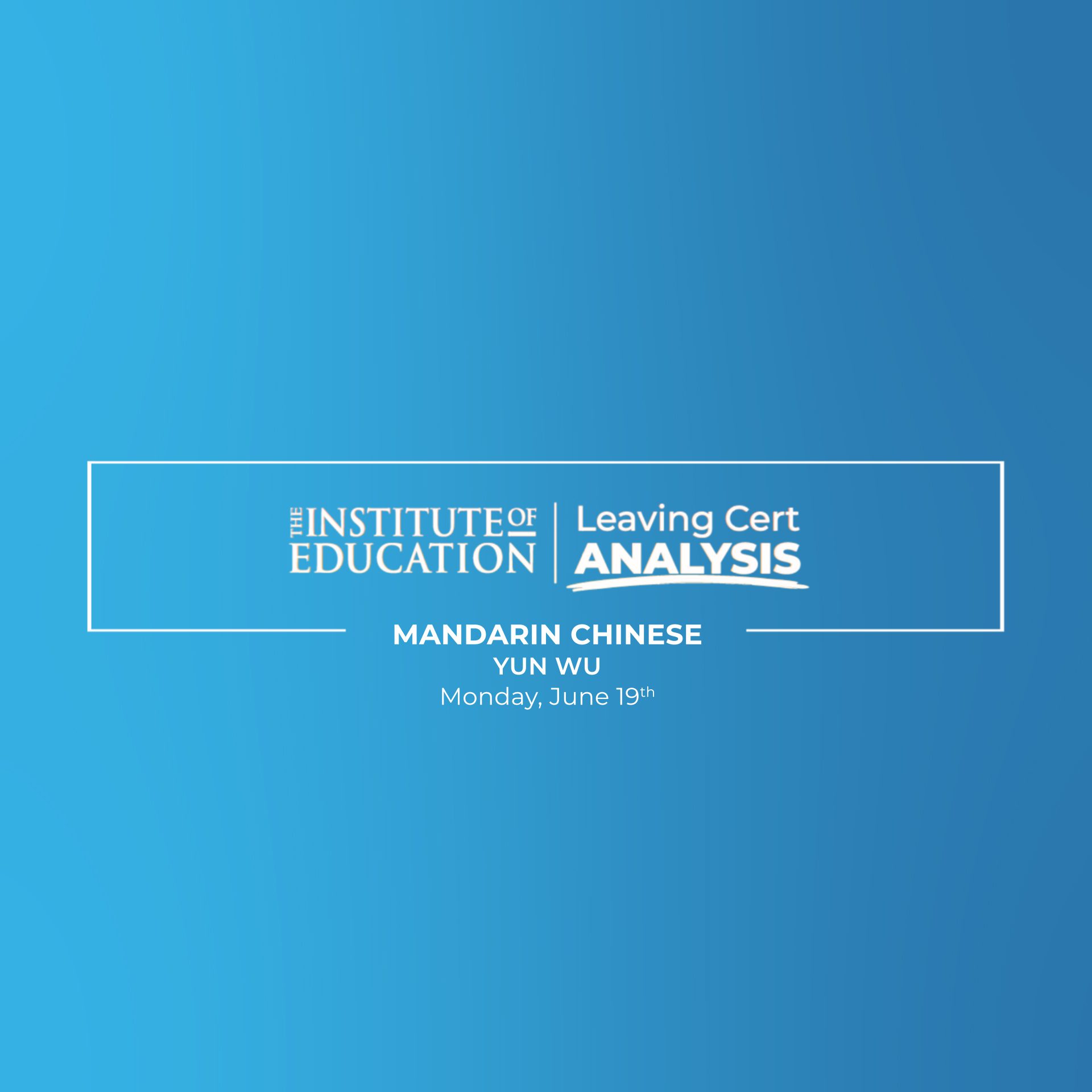Reaction to Leaving Cert 2023 Mandarin Chinese (Higher Level) by Yun Wu, Mandarin Chinese teacher at The Institute of Education
- A fair and well-structured paper that was very accessible to those who only started studying Chinese in Senior Cycle.
- A paper focused on real life applications of the language.
While a little bit tougher than last year, most students should be happy with his paper. The examiner was very thoughtful in the choice of themes and in providing clarification on some key terms. The vocabulary drew on the usual topics that a student would have prepared when learning any language and so there was nothing out of the blue or shocking to be found. Students who took their time, read the instructions carefully, and covered the key points of the question will score well.
Section A is the reading section. The first question was a train station notice board, a very relevant example for anyone looking to visit China. The locations mentioned were clear and familiar to students (park, hospital, library etc.). Question 2 asked students to read a flyer for a zoo – another common location for new language learners to cover. The format of this piece was very true to life, ensuring that the student’s skills were relevant to actual experiences. The examiner was very thoughtful in clarifying certain terms that students might know, for example giving the characters for “treasure”. However, students should read the questions very carefully, as unlike the others, B (iii) required an answer in Chinese not English. The poetry question was accessible, without the need for advanced metaphor. Part (e) asked a very specific question about the radical of characters, which while not a challenging question requires a clear grasp of the principles of written Chinese. Question 4 brought in an element of Chinese culture by focusing on food, Hot Pot in particular. Students should be familiar with discussing food, but some might find the sequential phrases (“first”, “and then”, “last”) tricky.
Section B, the writing section, had lots of options for students. In Question 5 they would need to choose the correct format and tone. Students needed to ensure chose the correct level of respect for the context. This stays true the course’s core idea of representing Mandarin Chinese in a manner that is relevant to their real lives, and so how to respectfully make an appointment with a mentor, GP, or employer should have been prepared. More advanced students would need to be cautious about word count in this section. The longer 100-character pieces had a useful overlap with the previous sections such that a student writing about their favourite food could use some of the vocabulary from Section A’s Hot Pot piece. The questions were accessible enough to allow students to use the vocabulary that they knew in order to describe a person that they know or a dream holiday.
The aural was spoken clearly and drew on common vocabulary (travel, family, descriptions). However, students would still need to take the time to read the questions carefully in order to know what to look for – numbers, locations etc.
While students with a heritage of speaking Chinese will find this paper very easy, it was very accessible and fair to those who only started learning the language in 5th Year. This paper was manageable and shows the study of Mandarin Chinese to be an appealing option for those looking to take it up for the Leaving Certificate.

